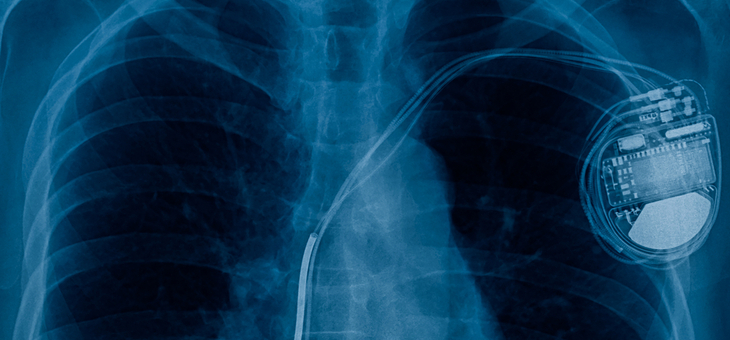The advent of pacemakers radically changed the treatment of heart-related issues, but sometimes the device is needed only temporarily, such as after surgery or a cardiac arrest. Connecting electrodes to the heart and then removing them involves two risky procedures.
A traditional pacemaker is a battery-powered device that delivers electrical impulses via electrodes to heart valve muscles to make them contract. Contracting and relaxing heart muscles pump blood and a pacemaker replaces or regulates the natural function of the heart when there are problems.
Where a temporary pacemaker is required, electrodes are attached to the heart during open-heart surgery and electrical signals are delivered through attached wires that protrude from the patient’s chest and connect to an external unit. The area around these wires can develop scar tissue and even become infected.
But now, scientists have developed a pacemaker that dissolveswhen it’s no longer needed, eliminating the threat of infection and the need for a second surgery. The device doesn’t even require a battery.
Read: Got a pacemaker? Keep this item at arm’s length
“Hardware placed in or near the heart creates risks for infection and other complications,” Dr John Rogers, lead developer of the device, told LabRoots.
“This unusual type of device could represent the future of temporary pacing technology.”
In a study published in the journal Nature Biotechnology, the research group demonstrated a device that uses electrodes wrapped in biocompatible materials attached to the heart. Signals were then delivered to the electrodes wirelessly from an antenna on an external device.
The device is around 250 microns thick and dissolves harmlessly in the body after five to seven weeks.
“Sometimes patients only need pacemakers temporarily, perhaps after an open-heart surgery, heart attack or drug overdose,” says study co-lead author Dr Rishi Arora.
Read: One cup of leafy green vegetables lowers heart disease risk
“After the patient’s heart is stabilised, we can remove the pacemaker. The current standard of care involves inserting a wire, which stays in place for three to seven days. These have potential to become infected or dislodged.”
With further refinement, Dr Arora says it may even be possible to avoid the first surgery to attach the electrodes.
“With further modifications, it eventually may be possible to implant such bioresorbable pacemakers through a vein in the leg or arm,” he says.
“In this instance, it also may be possible to provide temporary pacing to patients who have suffered a heart attack or to patients undergoing catheter-based procedures, such as trans-catheter aortic valve replacement.”
Read: Massive imbalance in heart attack treatment and care, study finds
The technology has the potential to assist with other medical conditions and could revolutionise medical engineering more broadly.
“We build these devices out of different types of safe, bioresorbable materials and in optimised architectures to ensure stable operation over a time period somewhat longer than is clinically necessary,” Dr Rogers says.
“We can tailor the devices to address a broad spectrum of relevant lifetimes. Transient technologies, in general, could someday provide therapy or treatment for a wide variety of medical conditions, serving in a sense, as an engineering form of medicine.”
Have you or a loved one had heart surgery? Was a pacemaker required? Would this development have aided recovery? Why not share your experience in the comments section below.
If you enjoy our content, don’t keep it to yourself. Share our free eNews with your friends and encourage them to sign up.
Disclaimer: This article contains general information about health issues and is not advice. For health advice, consult your medical practitioner.

